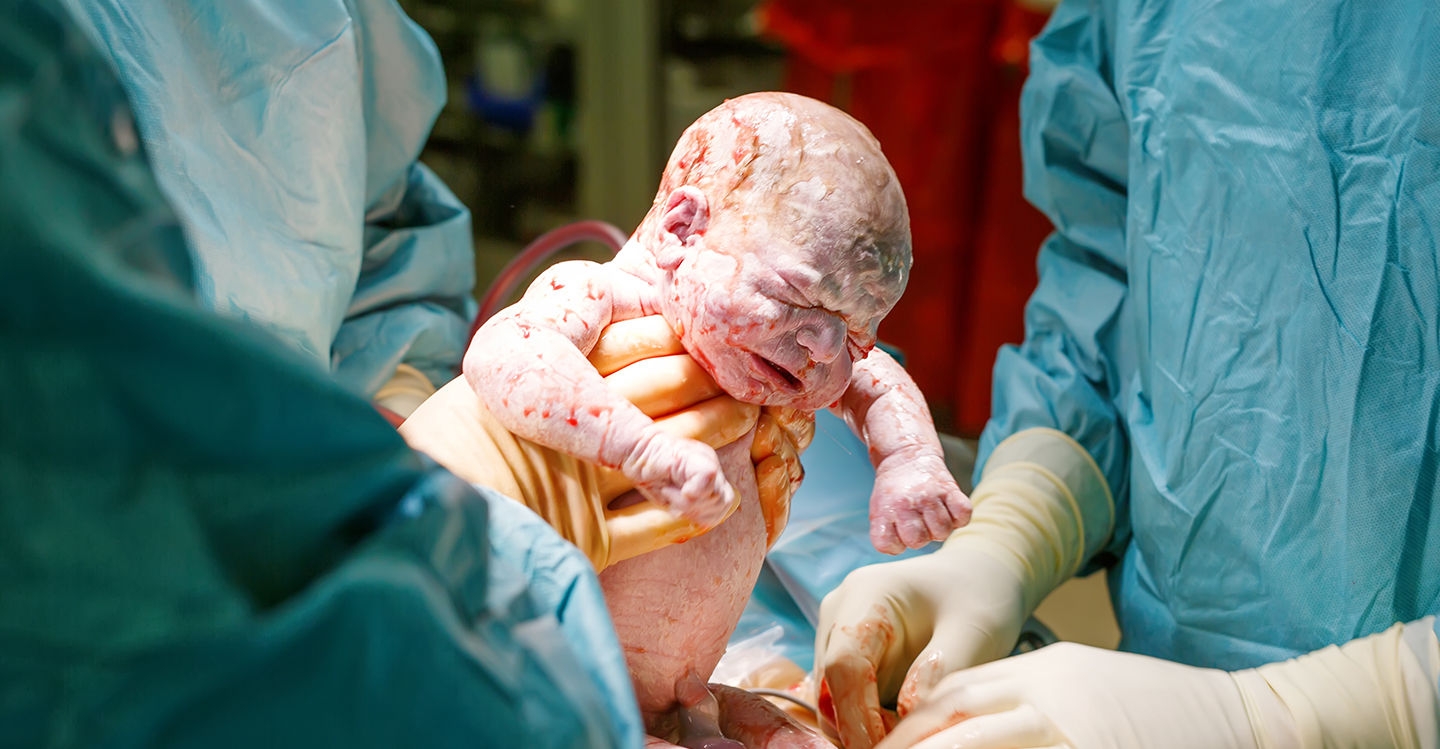What is a c-section?
A c-section is a surgical procedure to birth the baby through an incision in the abdomen rather than through the vaginal canal. A c-section will only be performed if consent has been given by you or, if you are unable to, your partner or next of kin. About 1 in 3 babies is born via c-section.
Why do some women need c-sections?
The main reason for having a c-section is if it is determined that natural birth poses a risk to either the mother or the baby. C-sections can therefore be either elective or emergency.
Elective c-sections have been pre-planned through consultation with a doctor. Some of the reasons for pre-planning a c-section include:
- A blocked cervical opening
- A baby that is either sideways or feet first and cannot be moved
- Having three or more babies at once
- A previous pregnancy from c-section
Emergency c-sections are decided upon in the hospital while you are in labour. Some of the reasons might include:
- If an accident has induced early labour or prevents vaginal birth
- Signs of distress from the baby in the womb
- A slow labour due to weak and infrequent contractions
- A baby that cannot fit through your cervical opening
- A prolapsed umbilical cord (which cuts off the baby's oxygen supply)
- A health issue, such as herpes or high blood pressure, that flares up during labour and risks either mother or child
A c-section is a major surgical procedure which means that a vaginal birth, if possible, is a safer option. Your doctor and the hospital medical staff will be best positioned to advise you on either.
Are babies born by c-section different to other babies?
The evidence is unclear about whether there are any later life implications for c-section babies. Although it is best to direct any questions to your healthcare professionals, keep in mind that c-sections are, and have been, a regularly performed procedure in Australia. Even if you were not, it is likely that many people you know were born via c-section.
What happens during a c-section?
While the region of the surgery is sterilised and prepared, you will be given an anaesthetic. Most are either spinal or epidural, which block sensation and pain from a certain point below the spine. As you will be awake for this, a screen will be raised to block your vision of the surgery.
Some c-sections require general anaesthetic, in which case you will be entirely unconscious. If there is enough time (i.e. not in an emergency) for your partner or support person to change and wash up, they will be able to accompany you during the procedure.
During the procedure you will have a catheter into your bladder to drain urine, and you will be on a drip to administer medications and nutrients.
Most incisions for c-sections are in the lower part of the abdomen and are horizontal. Only very few require a 'classical' or vertical incision, which can sometimes lead to complications in subsequent pregnancies. The operation usually totals between 30-60 minutes.
What happens after a c-section?
The baby will be examined and likely taken away for a short time to have their breathing monitored. About 35 in every 1000 babies born by c-section has breathing problems, which is seven times the rate for babies born via vaginal birth. This is no great cause for concern and will not be a lasting issue.
If all is well with the baby, mothers and their partners can usually hold them while the incision is closed up by the doctor. This is a lengthier process than the c-section itself as each layer of tissue needs to be stitched or stapled. Breastfeeding might be uncomfortable or awkward due to the wound but can be attempted immediately.
With a c-section, hospital stays are usually longer for both mums and babies – around 3 to 5 days all up. This is to ensure that there are no acute side effects of the surgery and to give mum a bit more time to recover.
What are the side effects of having a c-section?
C-sections are major surgical operations. Extra care must therefore be taken following surgery.
You will need to monitor the area for signs of infection, like acute pain, inflammation, redness and bad odours. Although you will be given antibiotics during and following your c-section to help prevent this issue, infection remains a risk.
The wound itself and the muscles surrounding it are at risk of tearing, and care must therefore be taken in your exertions and movements. It is advisable to ask for as much help as possible from family and friends for even day-to-day activity. Doctors recommend that for the first few weeks you lift nothing heavier than your baby.
Some problem signs to look out for include:
- Vaginal discharge, urinary leakage and constipation
- Back pain, especially around the location of the epidural
- Pain and inflammation of your lower legs
- Pain when urinating
- Any increase in pain in your abdomen
Barring any particular or chronic reason, subsequent births can be attempted vaginally. This decision, however, should be made through close consultation with medical professionals.
The key to full recovery from a c-section is to look after yourself and be extra vigilant. Stay in close contact with your doctor or obstetrician and always have their details handy. Fully utilise the support of family and friends as you rest up, and don't rush back into anything exertive, such as exercise or sex, until you are advised to do so or feel 100% comfortable.
*The above should not be considered a substitute for professional medical advice. Always seek the advice of trained medical professionals.



